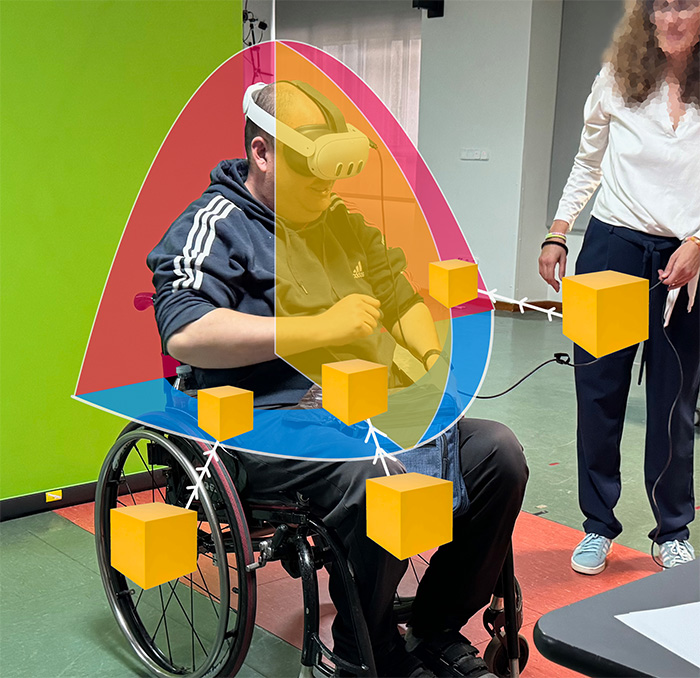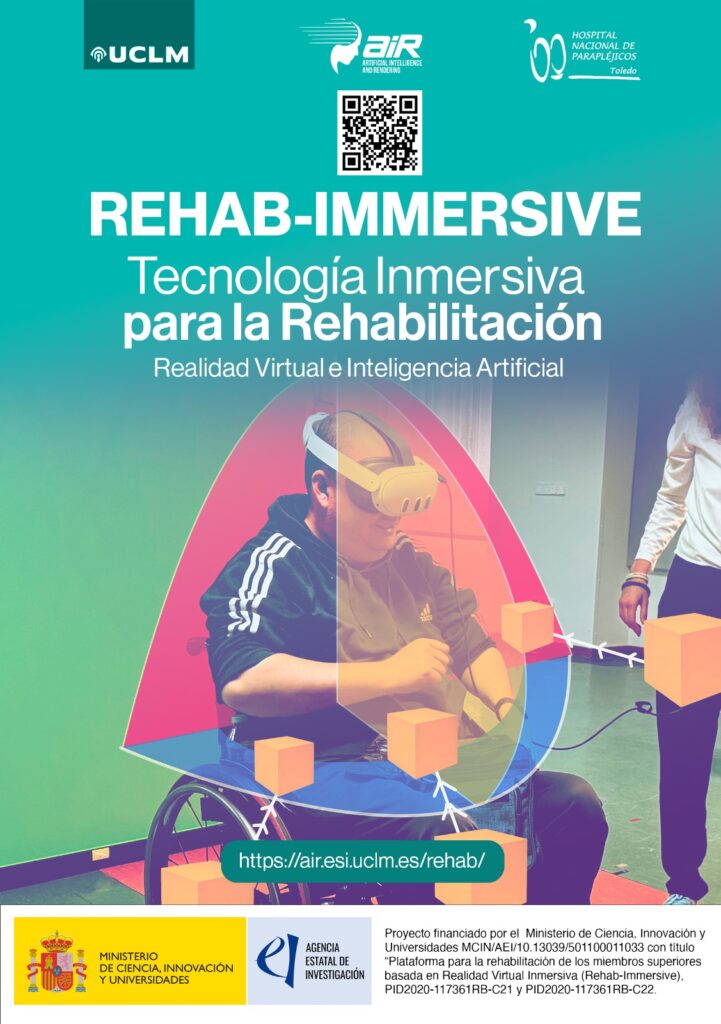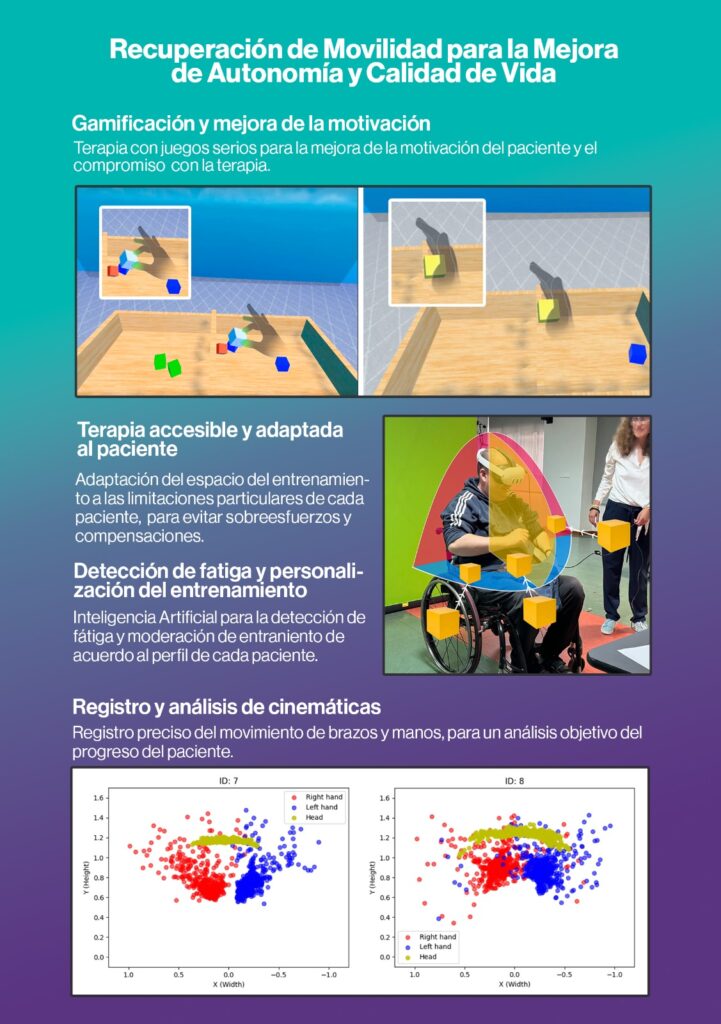Rehab - Immersive
Virtual Reality (VR) based platform for upper limb rehabilitation. A research project coordinated between the AIR research group (University of Castilla-La Mancha) and the Hospital Nacional de Parapléjicos de Toledo.
Virtual Reality
Rehabilitation in adapted virtual environments
Artificial Intelligence
Automatic adaptation to the patient's needs
Progress Analysis
Evaluation and precise analysis of kinematics
Cloud Platform
Remote access from different hospitals and homes
Rehab-Immersive: Reimagining Recovery Through Virtual Empowerment!
A different approach to upper limb rehabilitation in patients with spinal cord injury

Gamified therapy as a complement to traditional therapy, aiming to increase patient motivation and reduce the risk of therapy discontinuation.
The virtual environment and rehabilitation exercises are tailored to each patient’s individual limitations, aiming to create accessible, adapted, and safe settings. This customization of the environment and therapy enhances effectiveness and reduces the risk of overexertion.
Artificial Intelligence-based algorithms for fatigue and potential overexertion detection. Adjustment of environment, pace, and frequency of rehabilitation exercises.
Recording of patient movements and temporal information during exercise execution. The representation of these data, along with proposed metrics, enables an objective analysis of patient progress.


Summary of the coordinated project
The alteration of the upper limbs is one of the most common sequel after neurological injuries, with the loss and/or reduction of function of the arm and hand being one of the main consequences at the motor level in people suffering from tetraplegia. These sequels, together with the lack of a complete healing process, make the rehabilitation treatment prolonged in time.
The traditional therapy that the patient receives is centred on the manipulation of physical devices based on the repetition of certain functional movements, aimed at fulfilling a function or objective, related to movements of reaching and grasping and the execution of gestures of daily life activities. During the course of therapy, these tasks become monotonous for the patient, diminishing motivation and adherence to therapy. In addition, these tasks lack an element that objectively assesses the patient’s progress during treatment.
This project aims to define and develop the Rehab-Immersive prototype for upper limb rehabilitation, based on hand movement capture, in patients with spinal cord injury suffering from upper limb motor disorders. The Leap Motion controller and Virtual Reality glasses will be used to develop the immersive virtual environments. The rehabilitation paradigm it proposes is based on four fundamental keys:
(1) Low-cost rehabilitation, using commercially available and affordable technology to manipulate virtual reality applications for therapeutic purposes and adapted to the needs of patients. Low-cost technology, compared to the cost of robotic devices.
(2) Objective rehabilitation, collecting data on patient motor performance and providing quantitative assessment based on variables of upper limb skill and ability.
(3) Immersive rehabilitation, allowing a choice between virtual therapy based on desktop applications (Leap Motion) and immersive virtual therapy through technology such as Virtual Reality glasses.
(4) Cloud-based rehabilitation, allowing and facilitating the access of the hospital’s Occupational Therapy Unit to the rehabilitation system and to other external rehabilitation centres, currently interested in implementing our current RehabHand prototype.
